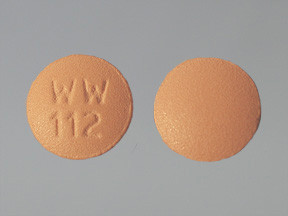DOXYCYCLINE - ORAL
PHONETIC PRONUNCIATION: (dox-ee-SYE-kleen)
COMMON BRAND NAME(S): Acticlate, Monodox, Vibra-Tabs, Vibramycin
GENERIC NAME(S): doxycycline hyclate
Uses
USES: This medication is used to treat a wide variety of bacterial infections, including those that cause acne. This medication is also used to prevent malaria. This medication is known as a tetracycline antibiotic. It works by stopping the growth of bacteria. This antibiotic treats only bacterial infections. It will not work for viral infections (such as common cold, flu). Using any antibiotic when it is not needed can cause it to not work for future infections.
How to use DOXYCYCLINE - ORAL
HOW TO USE: This medication is best taken by mouth on an empty stomach, at least 1 hour before or 2 hours after a meal, usually 1 or 2 times daily or as directed by your doctor. Take this medication with a full glass of water (8 ounces/240 milliliters) unless directed otherwise. If stomach upset occurs, taking it with food or milk may help. However, doxycycline may not work as well if you take it with food or milk (or anything high in calcium - more details below ), so ask your doctor or pharmacist if you may take it that way. Do not lie down for at least 10 minutes after taking this medication. Take this medication 2 to 3 hours before or after taking any products containing aluminum, calcium, iron, magnesium, zinc, or bismuth subsalicylate. Some examples include antacids, didanosine solution, quinapril, vitamins/minerals, dairy products (such as milk, yogurt), and calcium-enriched juice. These products bind with doxycycline, preventing your body from fully absorbing the drug. When using to prevent malaria, this medication is usually taken once daily. Take the first dose of this medication 1 to 2 days before travel or as directed by your doctor. Continue to take this medication daily while in the malarious area. Upon returning home, you should keep taking this medication for 4 more weeks. If you are unable to finish this course of doxycycline, contact your doctor. If you are using the liquid form of this medication, shake the bottle well before each dose. Carefully measure the dose using a special measuring device/spoon. Do not use a household spoon because you may not get the correct dose. The dosage is based on your medical condition and response to treatment. For children, the dosage may also be based on weight. For the best effect, take this antibiotic at evenly spaced times. To help you remember, take this medication at the same time(s) every day. Continue to take this medication until the full prescribed amount is finished, even if symptoms disappear after a few days. Stopping the medication too early may allow bacteria to continue to grow, which may result in a return of the infection. Tell your doctor if your condition persists or worsens.
Side Effects
Precautions
Interactions
Overdose
Images

- color
- orange
- shape
- round
- imprint
- WW 112

- color
- orange
- shape
- round
- imprint
- WW 112

- color
- orange
- shape
- round
- imprint
- WW 112

- color
- orange
- shape
- round
- imprint
- WW 112

- color
- orange
- shape
- round
- imprint
- WW 112

- color
- orange
- shape
- round
- imprint
- WW 112

- color
- orange
- shape
- round
- imprint
- WW 112

- color
- orange
- shape
- round
- imprint
- WW 112

- color
- orange
- shape
- round
- imprint
- WW 112
Reviews
Disclaimer
IMPORTANT: HOW TO USE THIS INFORMATION: This is a summary and does NOT have all possible information about this product. This information does not assure that this product is safe, effective, or appropriate for you. This information is not individual medical advice and does not substitute for the advice of your health care professional. Always ask your health care professional for complete information about this product and your specific health needs.
No Reviews Yet